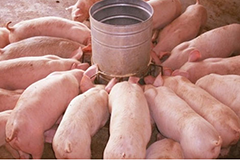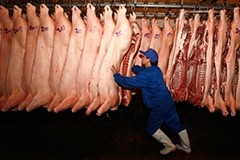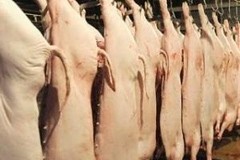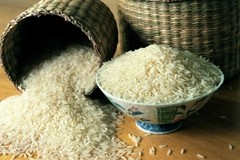Analysis
World looks to China for clues about global pork strength
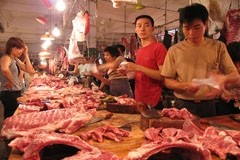
Having begun the year with historically strong prices on the global market, the world’s eyes will be looking at a number of swing factors, including China’s appetite for import, its pace of demand growth and the country’s recovering economy.
On the home front, Chinese hog and pork prices witnessed their usual end-of-year increases in November, and were further supported by the coldest weather China has experienced in five decades, which caused numerous transportation and logistics headaches.
Prices to grow
In addition, demand for pork has increased with China’s economic recovery. Prices are expected to continue to rise into the spring festival in mid-February, but they will be vulnerable to a modest decline after that and into the second-quarter.
In line with the market, piglet prices are also increasing. However, the increase is modest, still resulting in a 41% lower price than over the same period last year. This indicates that finishing farmers, who mainly own small-scale farms, are slow to replenish stock. Farming profitability has improved greatly as farms with breeding herds can currently make profits of US$43 per head, while smaller finishers can earn US$33 per head. This could lead to production expansion and result in lower prices.
Inventory of both hog and sow herds has remained stable in the fourth-quarter of 2012. This is very different from prior cycles when inventory would fall during periods of poor profitability. This change indicates that large-scale farming has expanded quickly at he expense of smaller farms, improving market stabilisation. Various types of subsidies from various levels of government are supporting growth as well, but are not transparent. Despite the apparent weakness in profitability in 2012, the expansion of large-scale farms continues.
For the first 11 months of 2012, Chinese pork imports increased 16% compared to the same period of 2011. However, in contrast with the soaring increase in the first-half of 2012, volumes stabilised in the second-half. Imports in early 2013 may decrease due to sufficient domestic supply, but are likely to recover in the second-half of this year.
While prices of pork meat have been moving higher in January, the rest of the first-half will be full of uncertainty as hog supply remains at a high level while the economy slowly recovers.
Other Far East markets
Meanwhile, Japan’s domestic production increased 3% in the first 10 months of 2012 compared to the same period of 2012, reaching 742,500 tonnes. Production in early 2011 had been impacted by the tsunami and its after-effects.
Pork imports reached 655,000 tonnes in the first 10 months of 2012, up 1% compared with the same period of 2011. Imports of fresh and chilled pork have increased market share at the expense of frozen pork. The US remains the leading supplier, accounting for 41% of total Japanese pork imports.
Consumption up to October 2012 was stable, with less than 1% growth reflecting the mature nature of the market.
And in South Korea, pork production continued to recover in the fourth-quarter of 2012. In the first 11 months of the year, slaughter increased by 30% compared with the same period in 2011, which was impacted by FMD.
The increase in supply weighed on wholesale prices, which averaged KRW4,278 per kilo in the first 11 months of 2012, compared to KRW6,212 per kilo in the same period of 2011, a sharp decrease of 31%. The farm-gate price decreased 26% during the same period.
Despite falling market prices, the hog inventory remains stable, not yet showing signs of liquidation. The number of hogs under two months old was more than 3m in September 2012, a record high. This, we expect continued pressure on pricing through the first-half of 2013.
Through November, Korean pork imports were down 35% compared with the same period in 2011 due to growing domestic production. With strong domestic supplies, imports are likely to remain restrained in 2013. The US remains the key supply source for the South Korean market, accounting for 38% of total import volumes.
